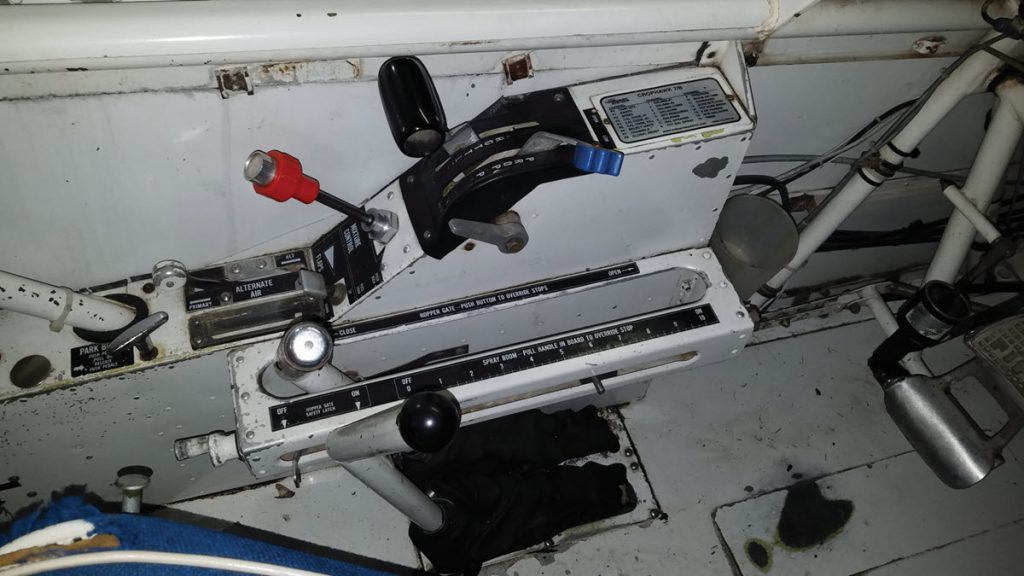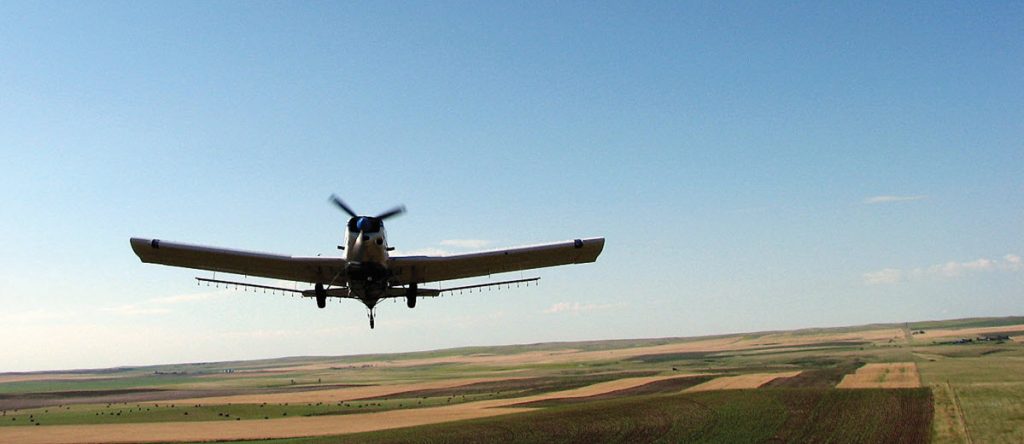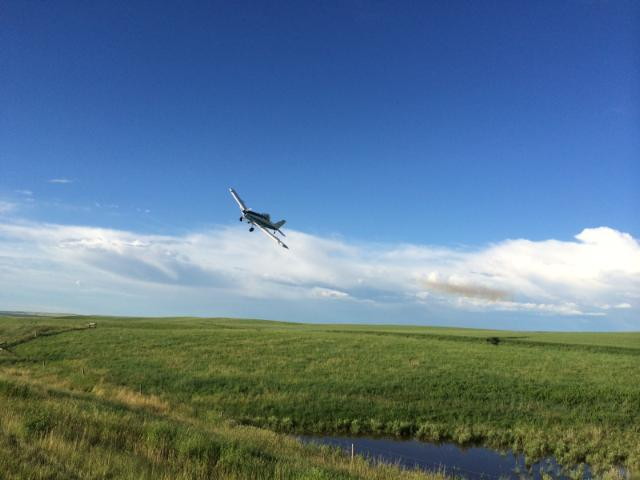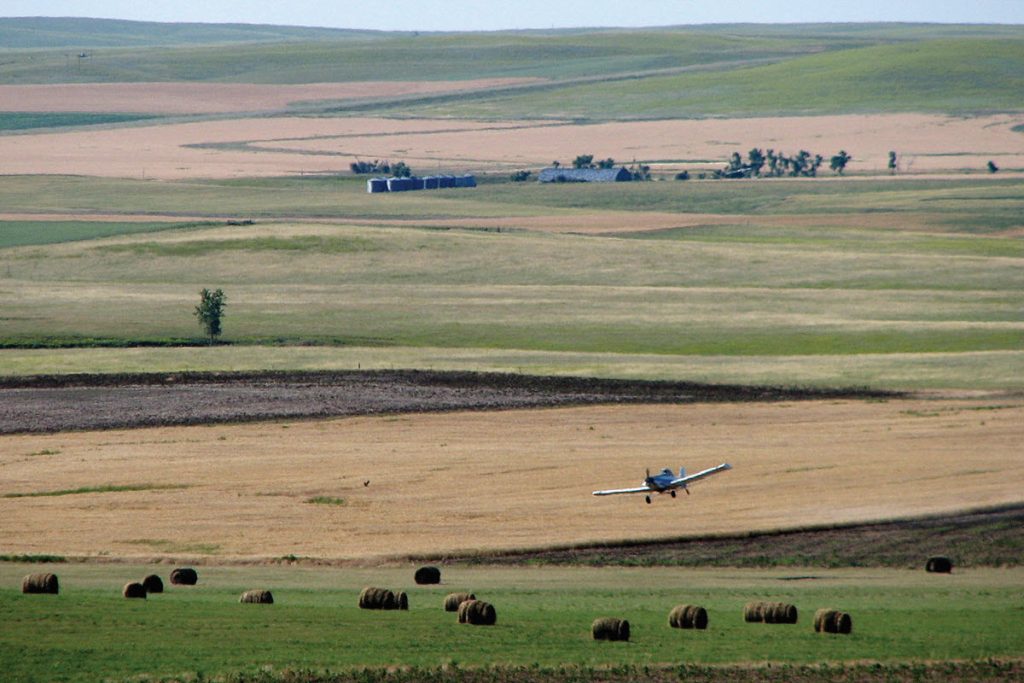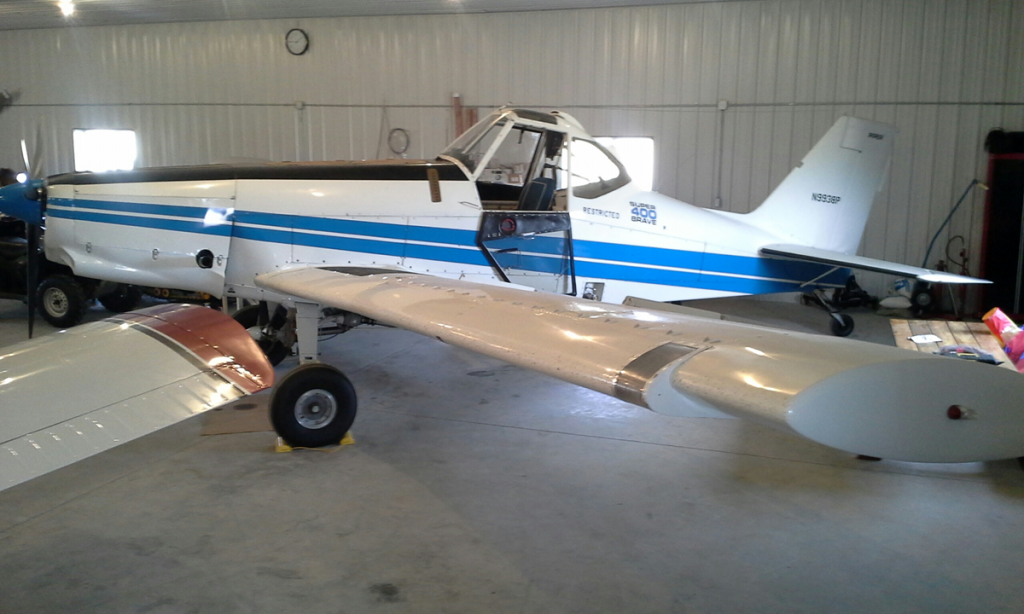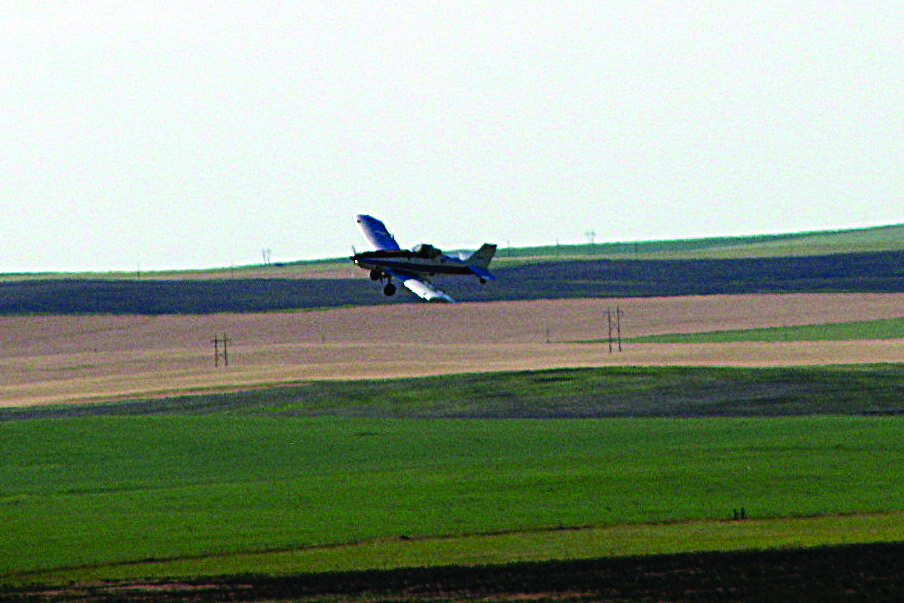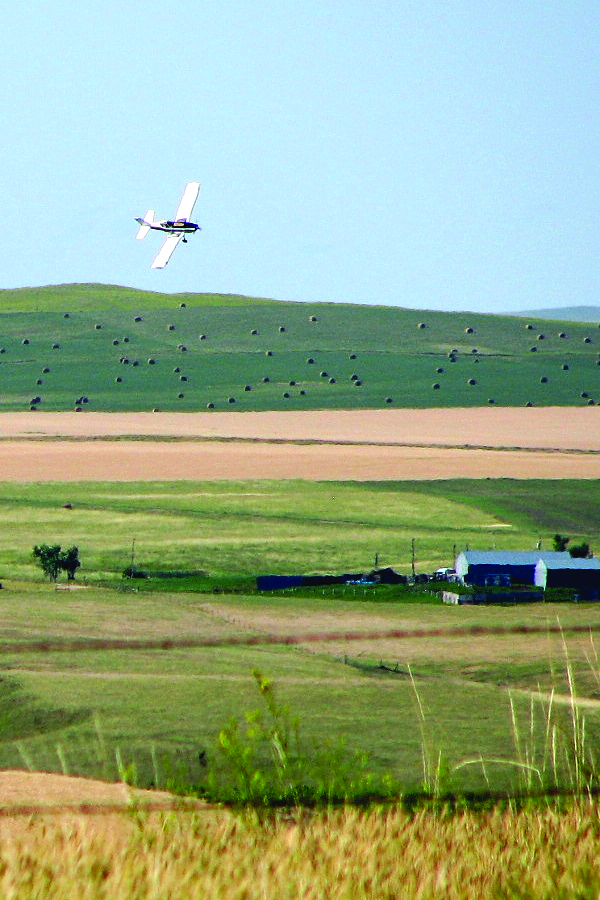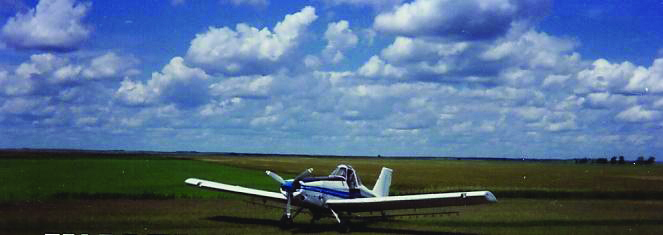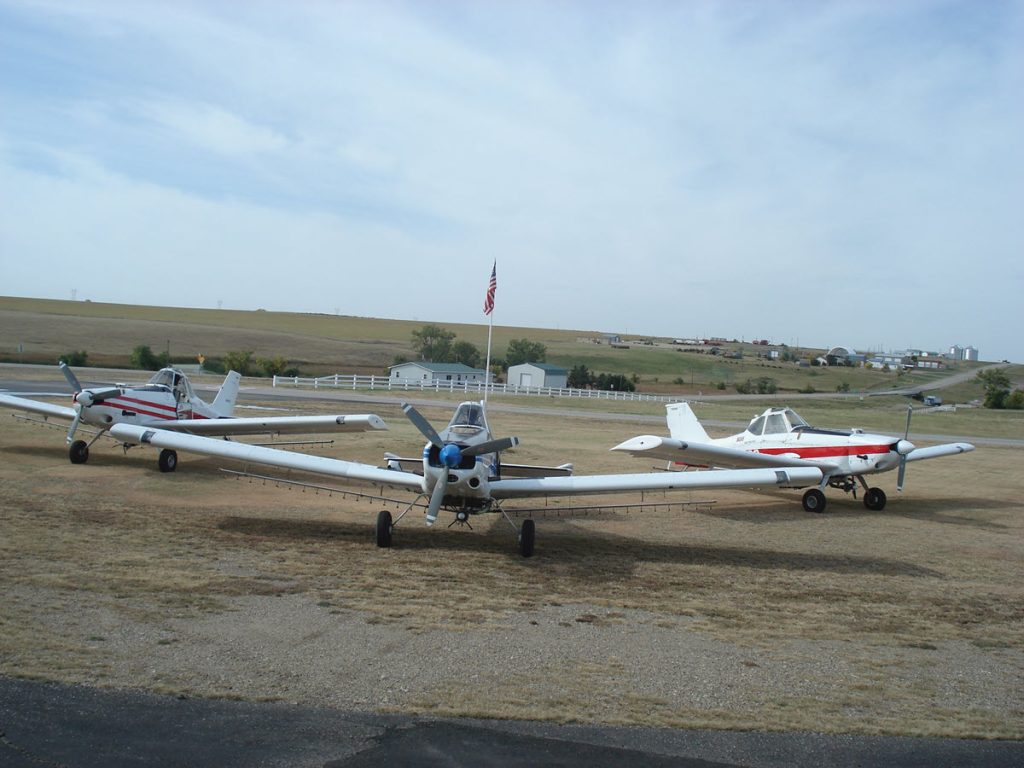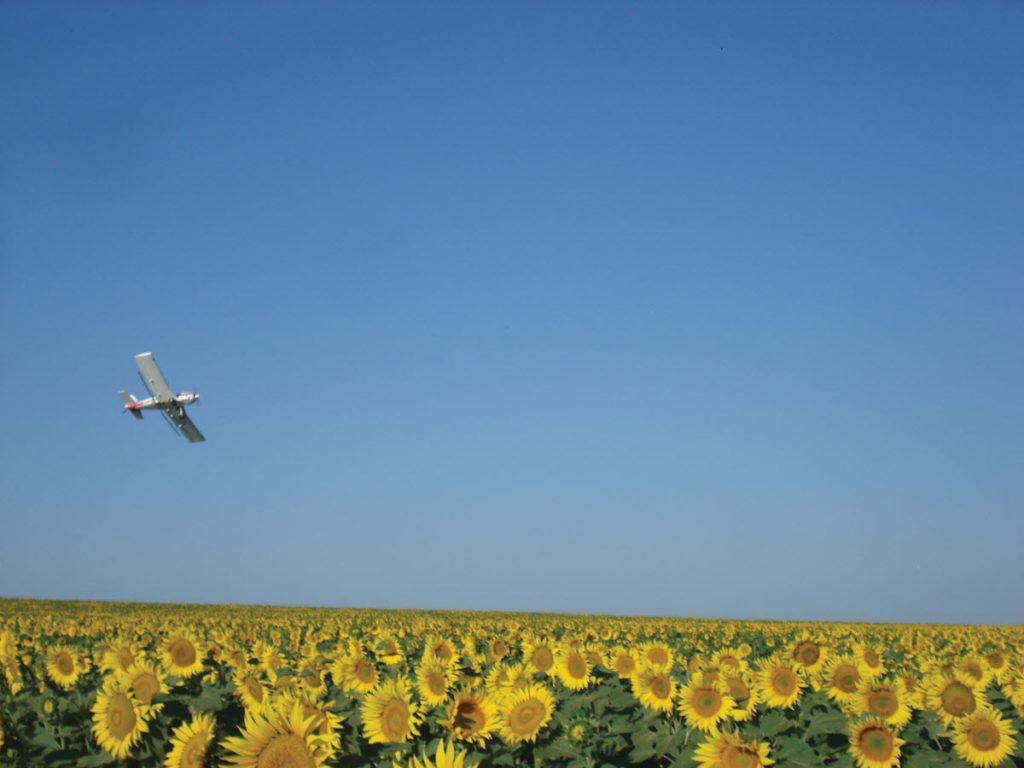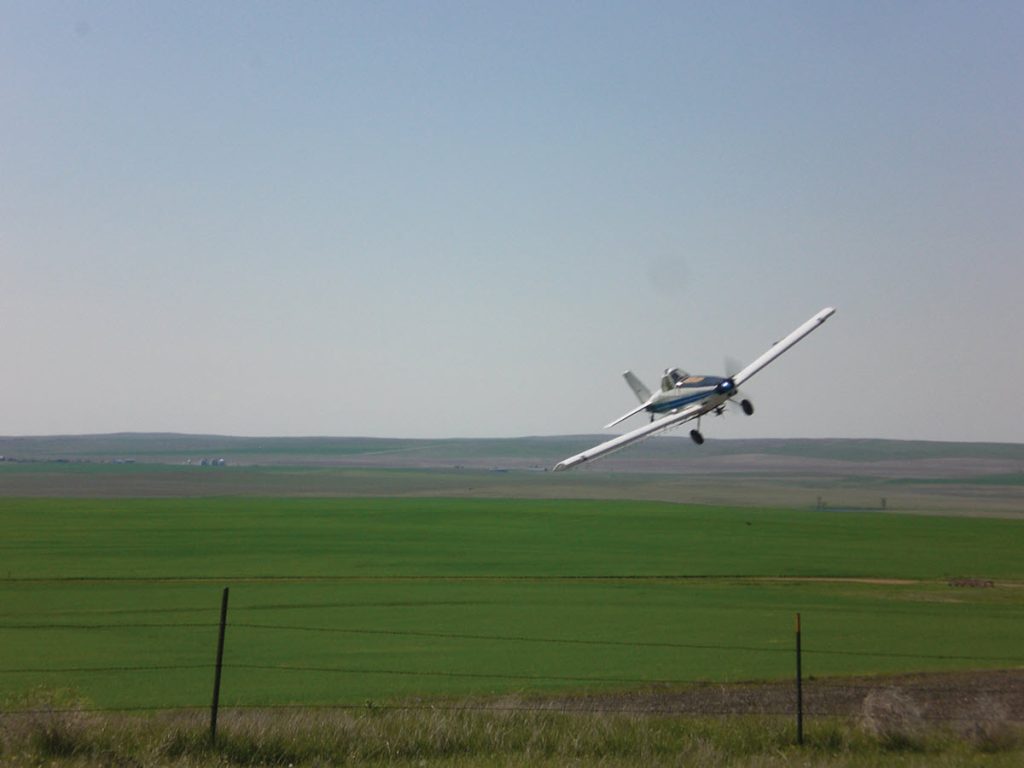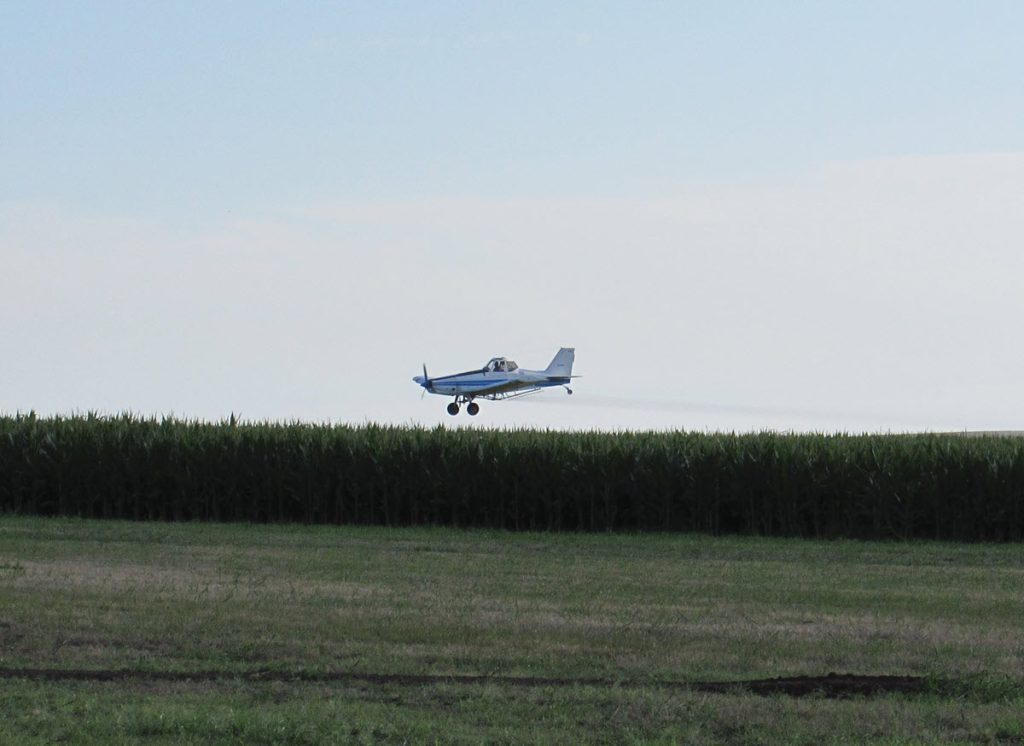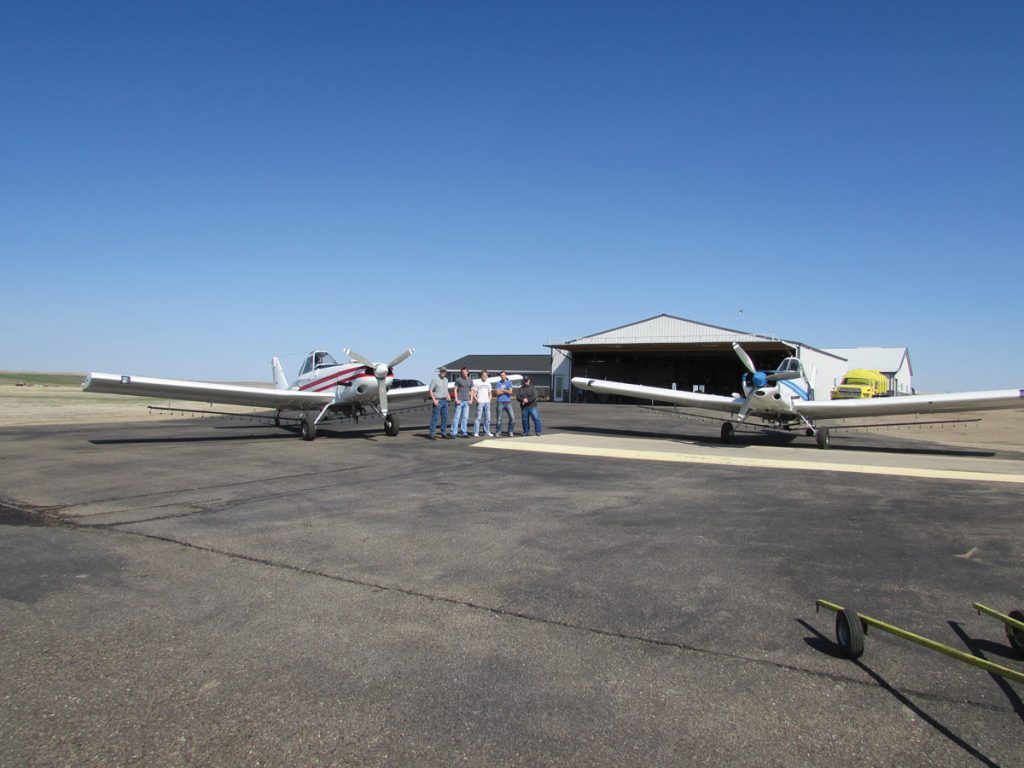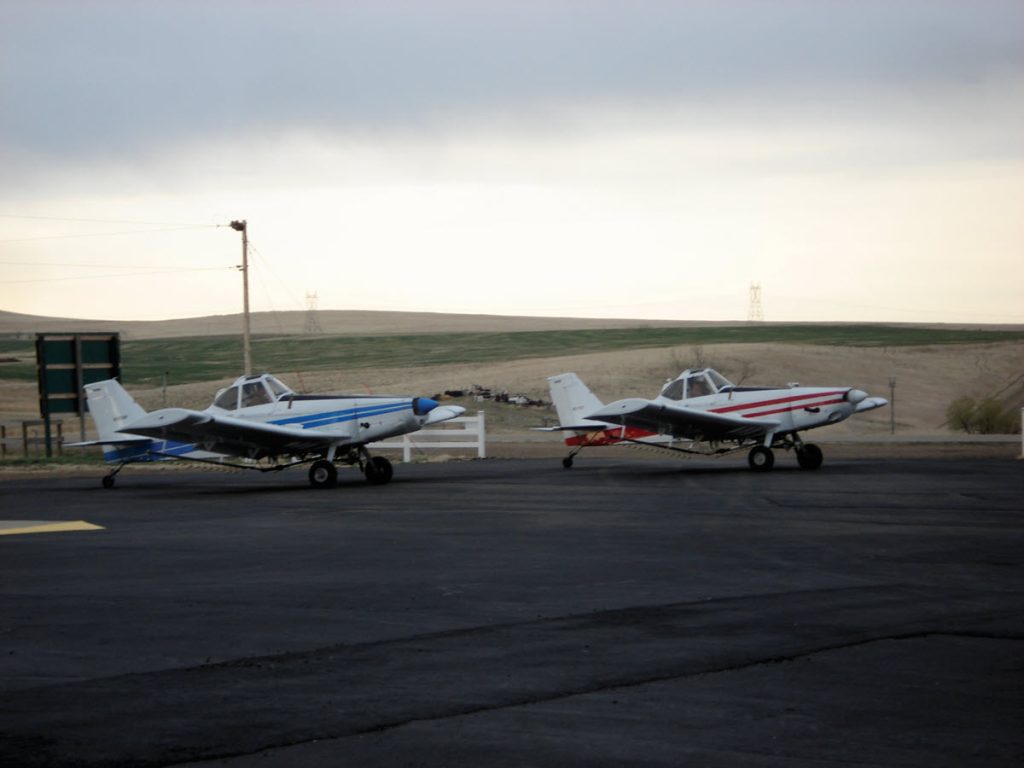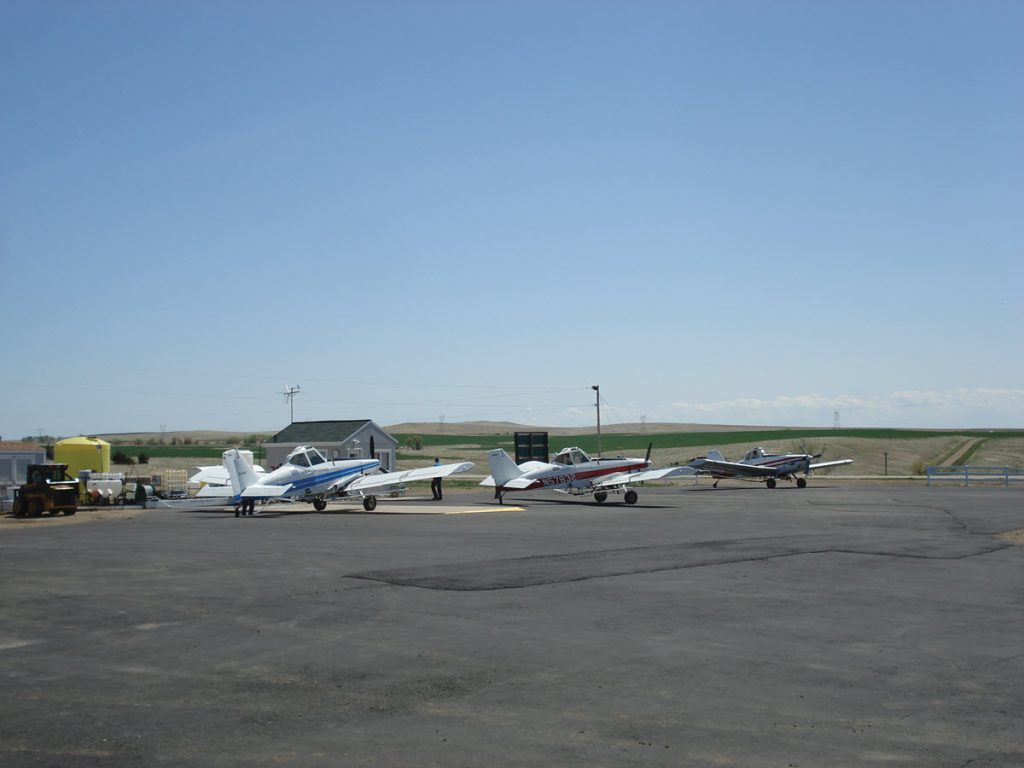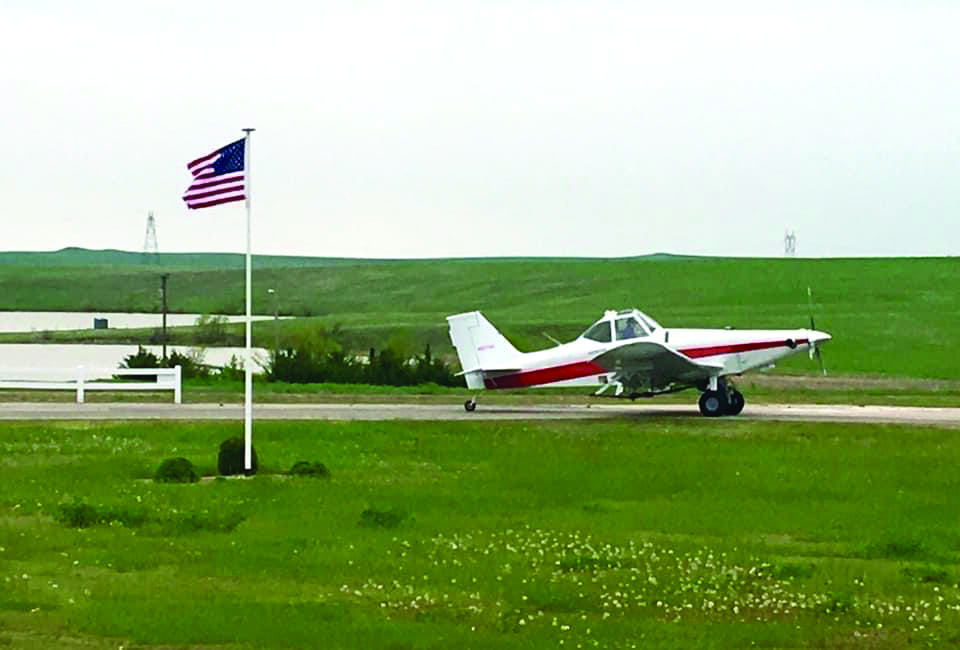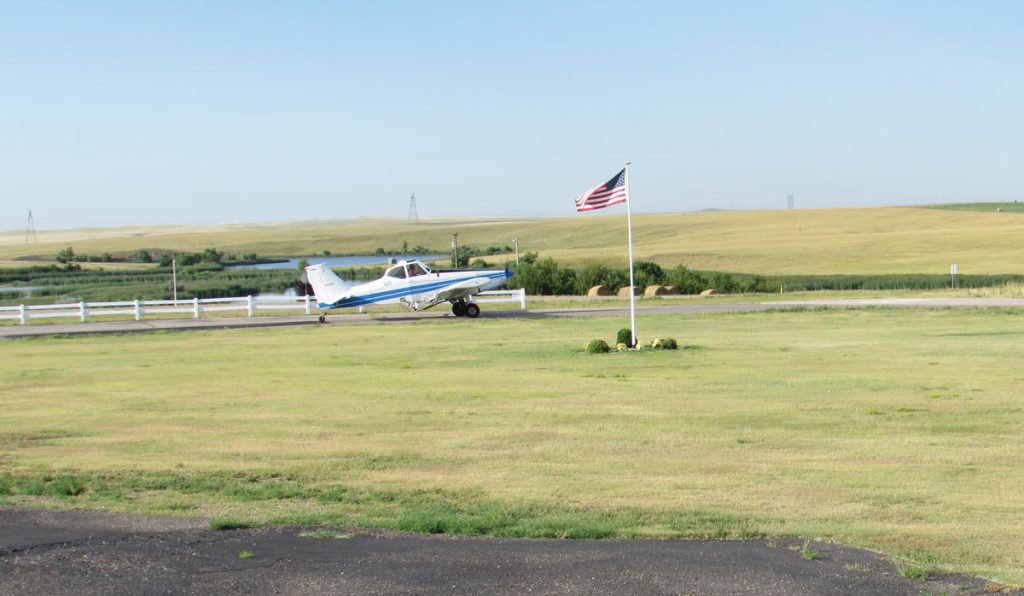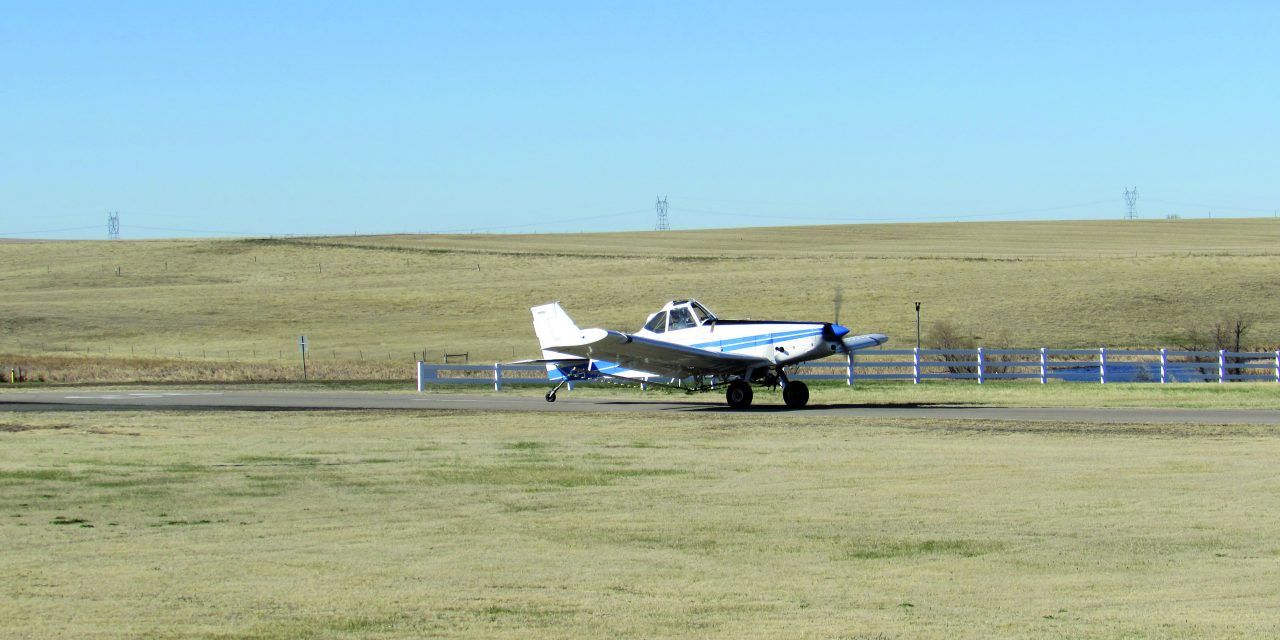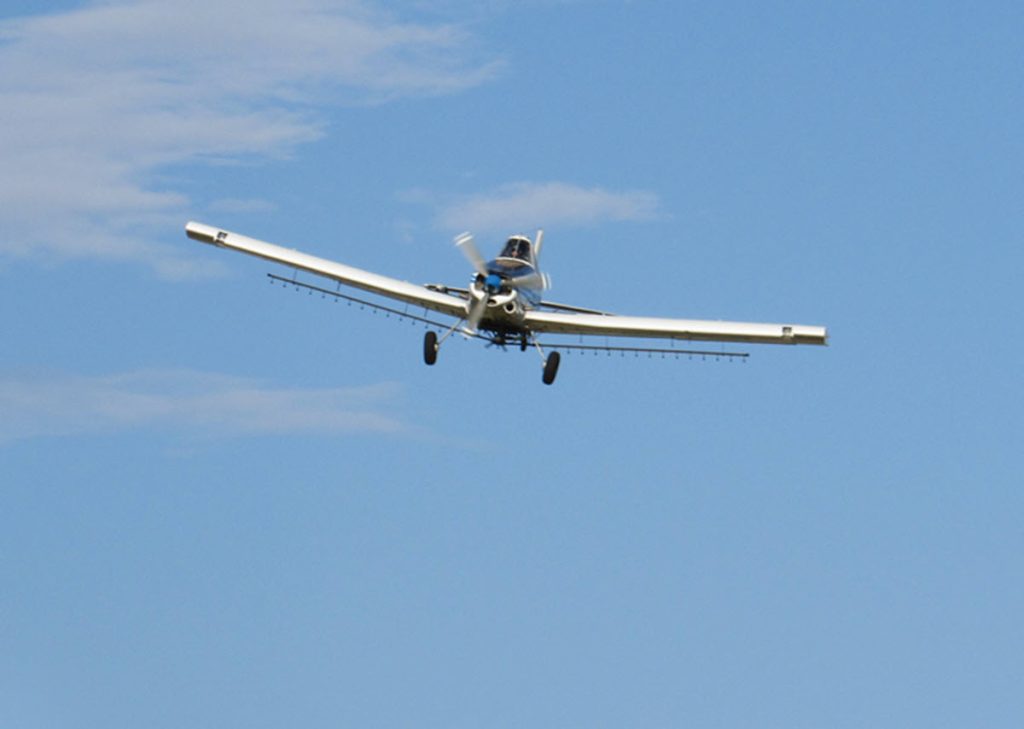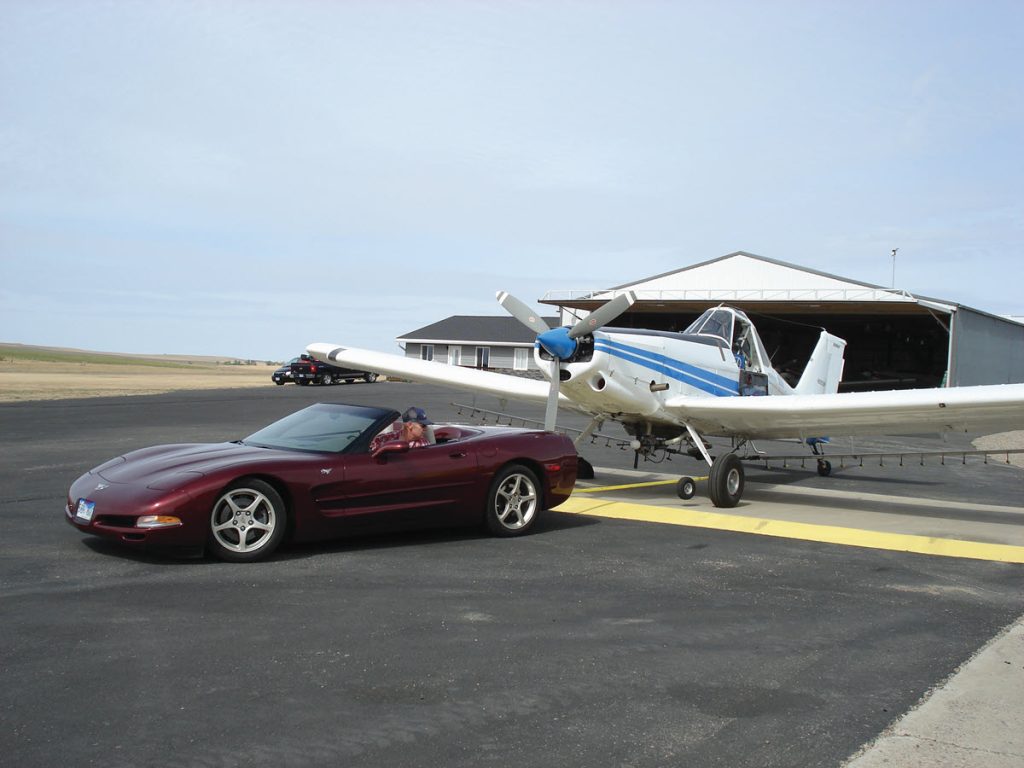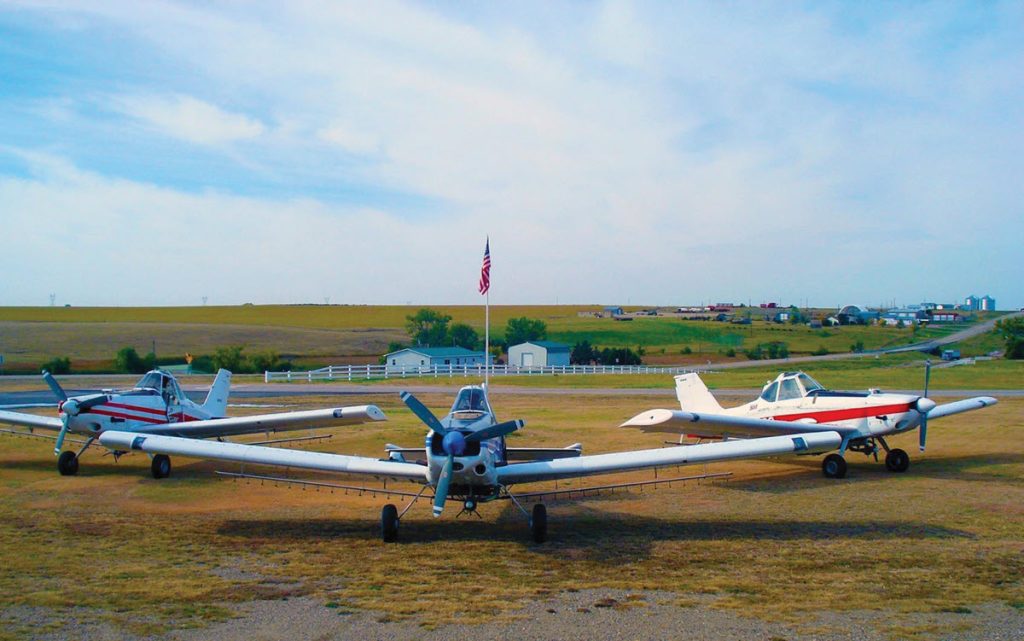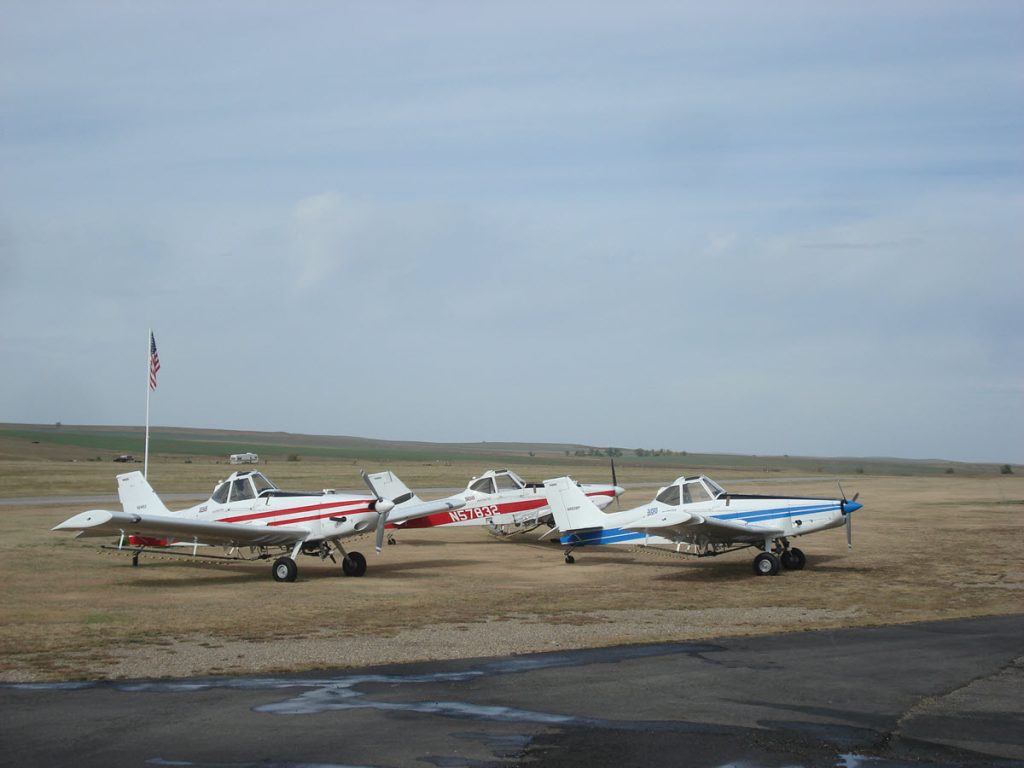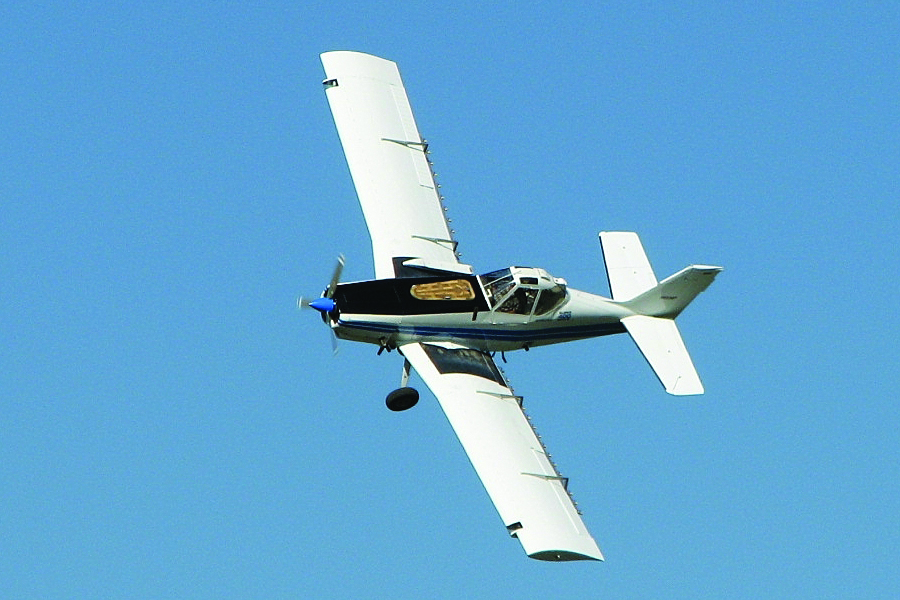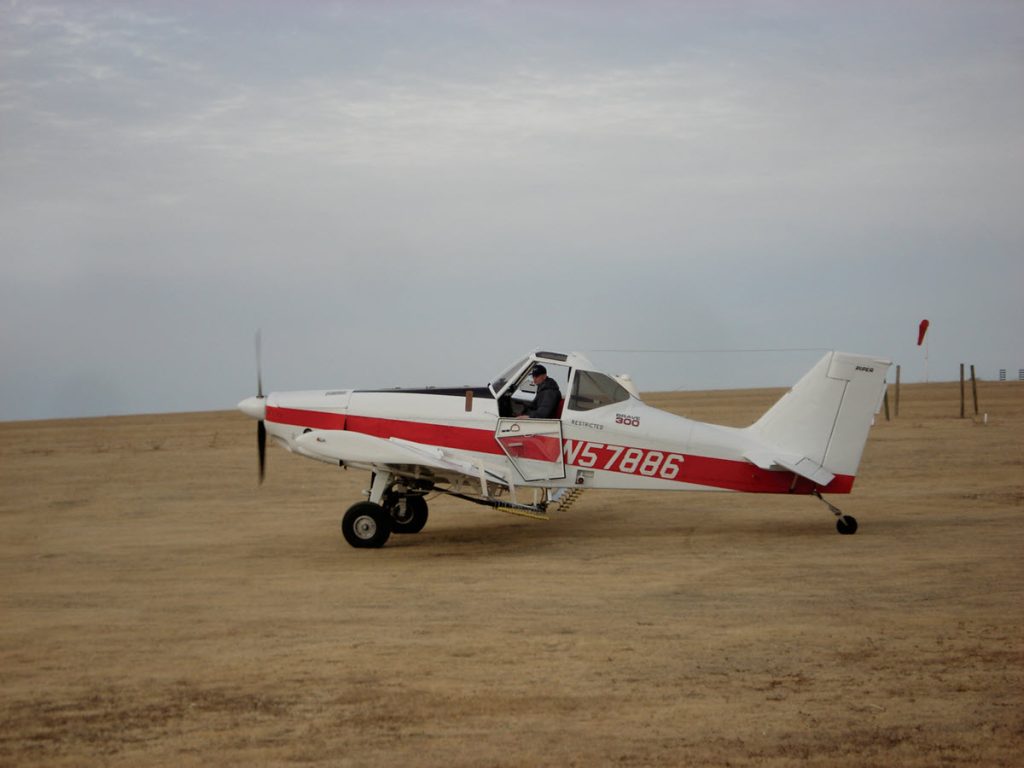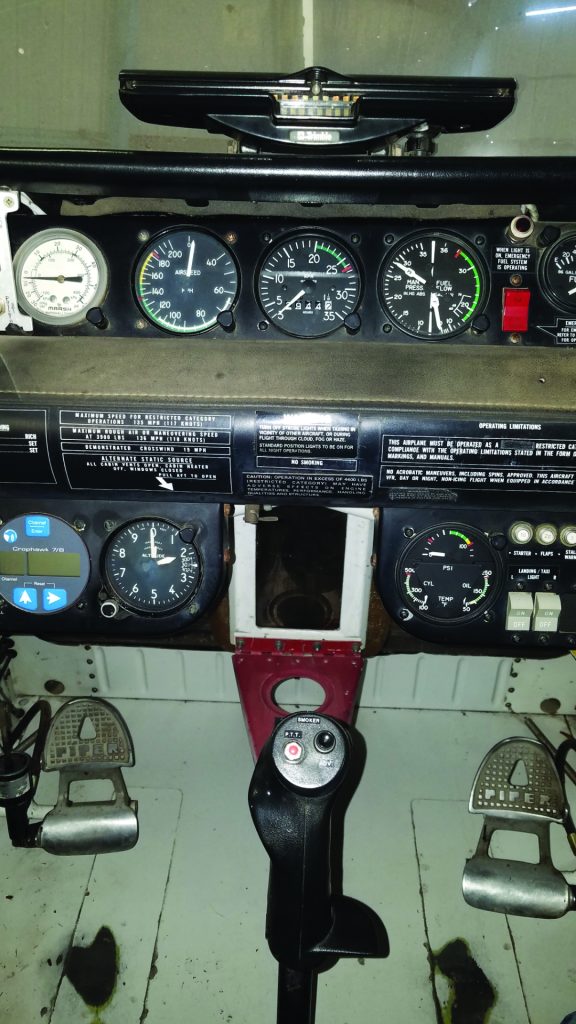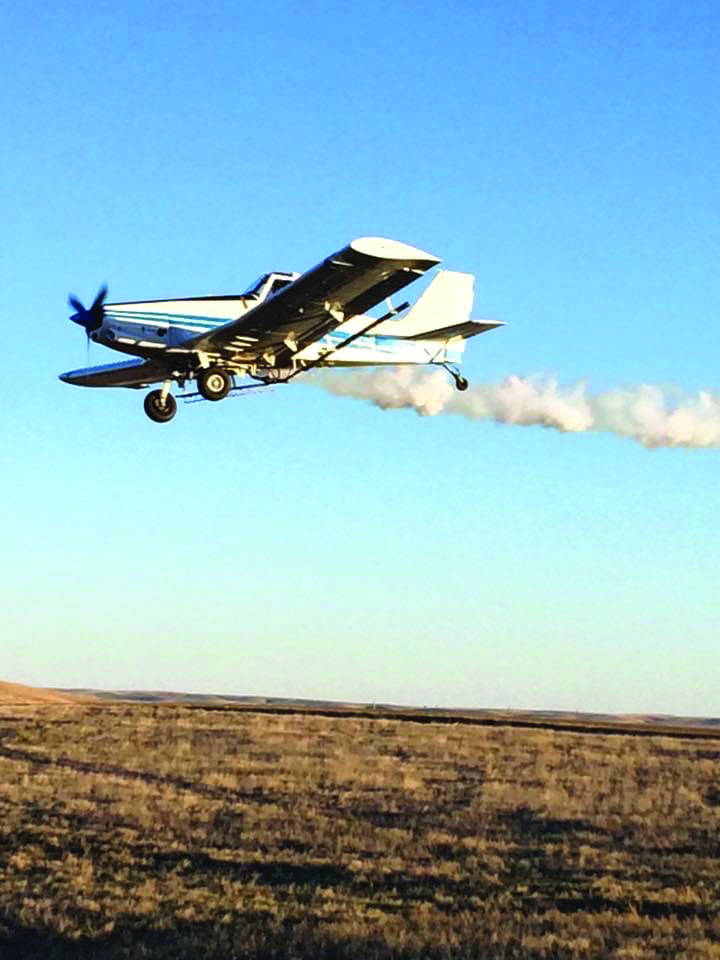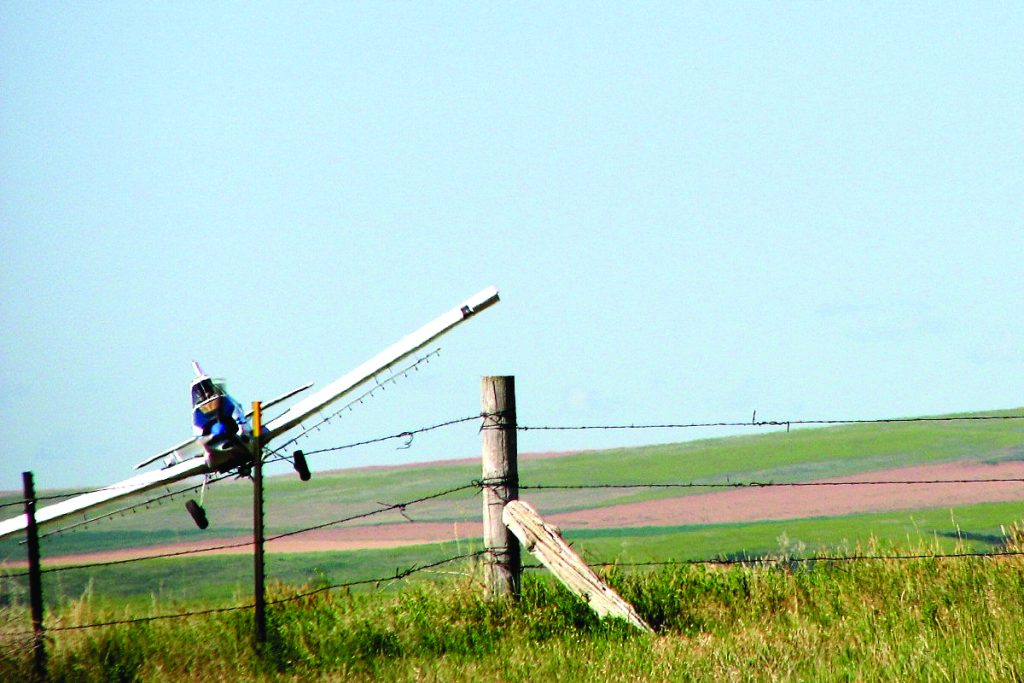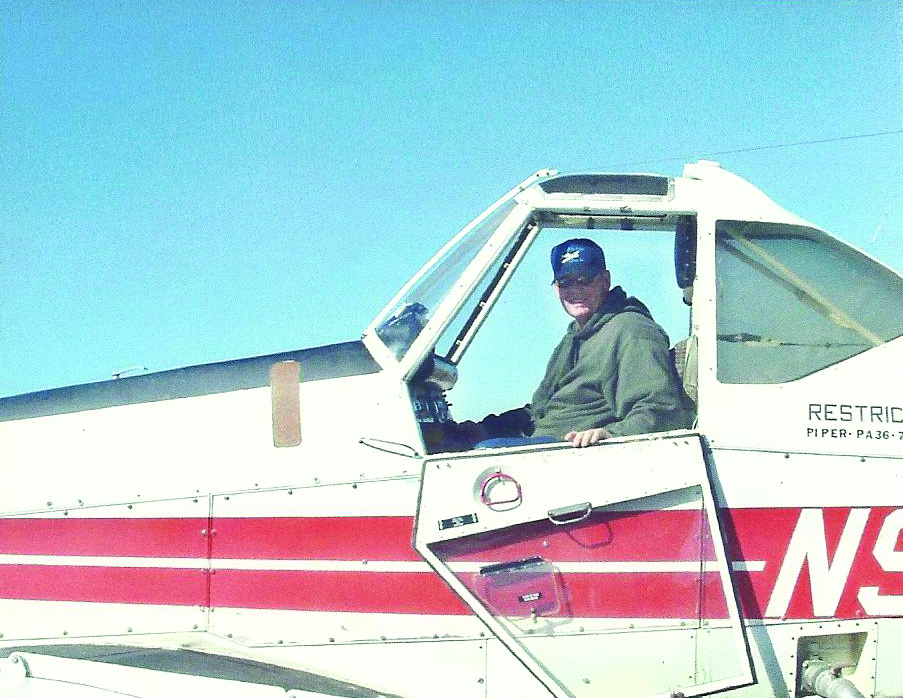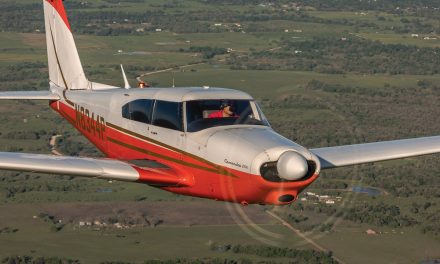A Pawnee to South America
Piston-powered crop-dusters don’t get much bigger. The Piper Pawnee Brave stood tall and massive sitting on the frozen ramp at Lubbock, Texas, a behemoth of a Piper. It was the biggest, single-engine piston-powered Piper I’d ever seen.
This was a pure, working airplane — a not-so-simple, utility machine, designed for agricultural application, towing gliders, or any other job that doesn’t demand speed over 110 knots, altitude above 100 feet AGL, an autopilot, range beyond about 100 miles, seating for more than one person, pressurization, or air conditioning (but, in my case, a great heater, thank God.)
Normal performance parameters of speed, climb, range, and cabin comfort don’t mean much when you’re dusting crops at a specific speed, usually less than 90 knots and altitude, often with your wheels only a few feet above the ground.
Neither does appearance, fuel capacity, or aerodynamic sophistication matter much when no one cares how you get the job done.
Intentionally Slow
The Pawnee Brave’s long wings with what seemed a ridiculous, six degrees of dihedral, splayed up at a steep angle on both sides and the long nose seemed to almost comically stretch practically to the horizon.
study in how to make an airplane fly slow. Fitted with spray booms under the wing, it was deliberately designed with virtually everything hanging out, the better to kill bugs in the process.
I’d flown the big Pawnee the day before, an informal checkout that had consisted of the dealer handing me the keys and pointing at the ramp with the comment, “It’s the red and white one.”
The checkout couldn’t be too much less complex, as there was only one seat and one tailwheel. Like a lot of pilots raised on tailwheels in the 1960s, that wasn’t a problem for me, but it seems the number of taildragger fans diminishes with each passing year.
The airplane’s king-sized, eight-cylinder mill was a question mark. I’d flown a Comanche 400 with the same powerplant and had mixed results. Hot starts had been a problem, but to be fair, I had less than 100 hours in the airplane, so perhaps it was simply my inexperience with hot-starting the big Lycoming IO-720.
As happens so often in West Texas during winter, the wind was whipping down the plain as I hit the starter and commenced to commit aviation. The huge Lycoming chug-a-putted to life and I S-taxied the big taildragger to the active runway.
| New Price :1982 | $119,500 |
| Engine | Lyc IO-720 |
| Hp | 400 |
| TBO (hrs) | 1,500 |
| Fuel type | 100LL |
| Landing gear type | Fxd/Conv |
| Max TO weight (lbs) | 4,800 |
| Empty weight (lbs) | 2,465 |
| Useful load–std (lbs) | 2,335 |
| Usable fuel (gal/lbs) | 86 |
| Payload–full fuel (lbs) | 1,819 |
| Wingspan: (ft) | 38′ 9″ |
| Length | 27’6″ |
| Height | 7’8″ |
| Wing area (sq ft) | 226 |
| Wing loading (lbs/sq ft) | 21.3 |
| Power loading (lbs/hp) | 12.8 |
| Seating capacity | 1 |
| Cabin doors | 0 |
| Cruise speed (kts–75%) | 119 |
| Fuel Burn (gph/lbs) | 22 |
| Best climb, (fpm) | 920 |
| Stall (Vso – kts) | 58 |
All specifications and performance figures are drawn from official sources, often the aircraft flight manual or the manufacturer’s website. Another reliable source of information is Jane’s All-the-World’s Aircraft. Specifications on older aircraft will not always agree, as sources may differ on performance. Keep in mind that many of the performance specs are fairly meaningless on an airplane that was never designed to exploit normal aviation parameters.
Into the Air
Like most crop dusters, the airplane’s top engine cowling fell away at a steep angle, the better to actually see the crops from a height of two feet, so at least I could follow the centerline without having to S-taxi from left to right side of the narrow cockpit.
I zigged and zagged across the airport without incident. This should be fun, I thought foolishly, ever the optimist.
As it turned out, my “checkout” consisted of exactly one takeoff and one landing. My flight time in a squirrelly little Pitts S2A hadn’t even come close to preparing me for the big Piper, especially not in the gusting 25-30 knot winds that seem to live in Lubbock year-round. When I commented about the wind and weather, the dealer looked at me with that “Why-do-they-keep-sending-me-these-amateurs” expression, then put on his 10-gallon hat, hitched up his Levis, and muttered something about, “… these damned kids” under his breath.
But no one really cared much about winds or speed or weather on a crop-duster, right? Wrong! I cared, since I was to be its pilot, and my mission wasn’t to spray crops. As I stood on Lubbock’s slick, compacted December snow, feeling the winter wind of West Texas cut through my parka, I wondered why anyone would want to fly a 2-1/2-ton, 110-knot airplane 3,000 nm from Texas to Guayaquil, Ecuador.
Naturally, these airplanes were bought and paid for by the good ole’ US of A, a feeble attempt to control the flow of cocaine back into the U.S. The day before, the dealer had mentioned, matter-of-factly, that a previous delivered Brave had two new holes in the wings when it arrived in Ecuador. Apparently, the drug dealers don’t appreciate someone flying airplanes above their coca plants.
Call it a masochistic sense of fun, I guess. Call it a belief in the airplane’s intended mission — drug suppression in Ecuador and Columbia. Most important, call it a living, or at least, part of one. I shivered against the wind, hoping the weather would be more forgiving on the trip south.
South to America
The next morning, a low overcast signaled a typical early winter day in Lubbock. ATIS was calling it 1,200 overcast and 15 miles visibility, temperature 21 degrees F, wind 230 at 25 with gusts to 40. The airplane buffeted in the stiff surface wind, despite the weight of more than a ton of fuel. I had a full 86 gallons in the wing tanks and another 275 gallons of ferry fuel in the huge hopper directly in front of the cockpit (temporarily plumbed to feed the engine). When the hopper was filled with its normal capacity of toxic drug suppressant liquid, the pilot (who usually supervised the loading of fuel and applications) needed to be especially careful not to spill any of that material on the cockpit. If he got any on the pilot’s seat and sat in it without cleaning it very thoroughly, “ouch” might not suffice.
No matter, I thought. My load was strictly avgas. I was eager to be off toward warmer, friendlier skies. I completed the run up and advised the tower I was as ready for takeoff as I’d ever be.
“Ready” was a relative term. Duster airplanes don’t normally come equipped with radios and instruments for ferry flying, so a hodgepodge of temporary avionics were scattered around me in the single-seat cockpit. An electric artificial horizon topped the left side of the panel, and a small, two-inch directional gyro was slung beneath the right panel, just above my knee. Sandwiched between the seat and right sidewall, the automatic direction-finder was mounted facing straight up, and the transponder occupied the same position on the opposite side. The single VHF nav/comm was bolted in place beneath the left panel. Despite this vertigo-inducing layout and my intention to keep the trip purely day/VFR, the extras were intended to provide a hedge against the unexpected. That’s assuming they worked.
Brownsville, Texas, was my first destination of the day, 700 miles away beneath the clouds. If all went well, I’d clear Customs, top off my fuel, and continue along the Mexican coast toward Tampico and Vera Cruz, cut inland and cross the narrowest part of Mexico where the high jungle drops to near sea level, then track the Pacific coast down to Guatemala and negotiate the pass between a pair of semi-active volcanoes to Guatemala City for the second night. If luck was with me and there were no revolutions underway, I’d spend the third and final day flying southeast along the Central American coast past El Salvador, Nicaragua, and Costa Rica before traversing the Gulf of Panama to a landfall at Esmeraldas, Ecuador, and continuing on to Guayaquil.
So much for the original plan. After paperwork problems with Customs, I wound up spending an extra day in Brownsville before I was allowed to launch for Mexico.
Finally released and cleared, I left at sunrise and pointed the Pawnee Brave’s long nose down the Gulf Coast toward Tampico. Level at 2,500 feet to stay beneath the ever-present overcast and high enough to present a difficult target for angry drug runners on the ground, I set power at 75% and watched the airspeed needle stabilize at just under 100 knots indicated. Oh well — you can’t have both speed and beauty or, in this case, either one.
At least, I had the consolation of knowing I’d started with 361 gallons aboard, enough for 16 hours endurance at max cruise or 20 hours at long-range settings.
My revised destination was Guatemala City, about 1,200 nm from Brownsville, and my best guess was that I’d need just more than 11 hours to complete the flight.
Shake, Rattle, Roll
The big, eight-cylinder, Lycoming IO-720 — basically a pair of four-cylinder IO-360s welded together — had been happily guzzling fuel at 22 gph as if I owned a refinery, running smoothly for three hours. I was just beginning to trust it when suddenly, 50 miles south of Tampico, the engine switched to a violent regular vibration as though two cylinders had just dropped offline. Everything inside the airplane began to shake, including me, as I switched back to the main tanks, turned on pumps, tried the engine on each individual magneto and cycled every other control I could think of.
Nothing helped. The vibration continued, and I slowly arced to the right, back toward the Mexican coast. I’d been sightseeing at 1,000 feet just off the beach when the trouble started, and now I looked to the right in hopes of sighting an emergency landing site.
Almost immediately, I spotted the source of the problem. The spray booms attached to the aft bottom portion of the wings were vibrating so fast, they were a blur. As I’d burned off nearly 400 pounds of fuel, increased airspeed, and shifted the center of gravity, I’d apparently reached an area of resonance and set up a sympathetic vibration in the booms. I pulled the throttle back to 23 inches of manifold pressure and the vibration dampened as quickly as it had started.
Crisis over and lesson learned (vibrations can be aerodynamic as well as engine-related).
Mexico, Guatemala
I drifted south in the clutch of slight tailwinds, luxuriating in a 120-knot groundspeed. Legendary Vera Cruz gave way to the wide, coastal plain of Tierra Blanca and lush, green jungles of Mexico’s 100-mile-wide isthmus, Isto de Tehuantepec. I climbed slightly to clear the hills guarding the gulf on the Pacific side, sought out the beach, and cruised contentedly toward the Mexican-Guatemalan border.
The clouds had dissipated as I flew south, leaving the wild coast pristine in the last afternoon sun. Tapachula Airport passed beneath the wings, my signal to begin the long climb to clear the pass into Guatemala City. Two huge volcanoes guard the western approach, reaching 13,000 feet into the Central American skies. Though the pass is 10 miles wide, it often attracts thunderstorms. Fortunately, the weather was more agreeable this leg, and I managed to sneak past the building clouds at sunset and plunk to a landing at Guatemala City just as the day died behind me.
Guatemala City to Guayaquil, Ecuador, proved to be the most problematic leg of the trip, not to mention the longest. It was supposed to be about a 1,450 nm hop, 13 hours of flying in the Pawnee Brave, which virtually guaranteed I’d be arriving in darkness unless I left Guatemala City at oh-dark-thirty. I was looking forward to revisiting the beautiful west coasts of El Salvador, Nicaragua, and Costa Rica, but the weather enroute was more than a little iffy. As it turned out, the atmospherics in all equatorial Ecuador were down near IFR minimums with rain and fog, so I was treated to two extra days in Guatemala.
Though winter on the equator often remains bad for weeks, I finally saw what I hoped was a narrow weather window, topped the tanks with every ounce of fuel I could pump aboard and headed back out between the volcanoes for points south.
Within two hours I was skipping along 500 feet above the Pacific, barely off the Nicaraguan coast, watching the rain-soaked clouds ahead alternately dip lower and lift to 2,000 feet or more.
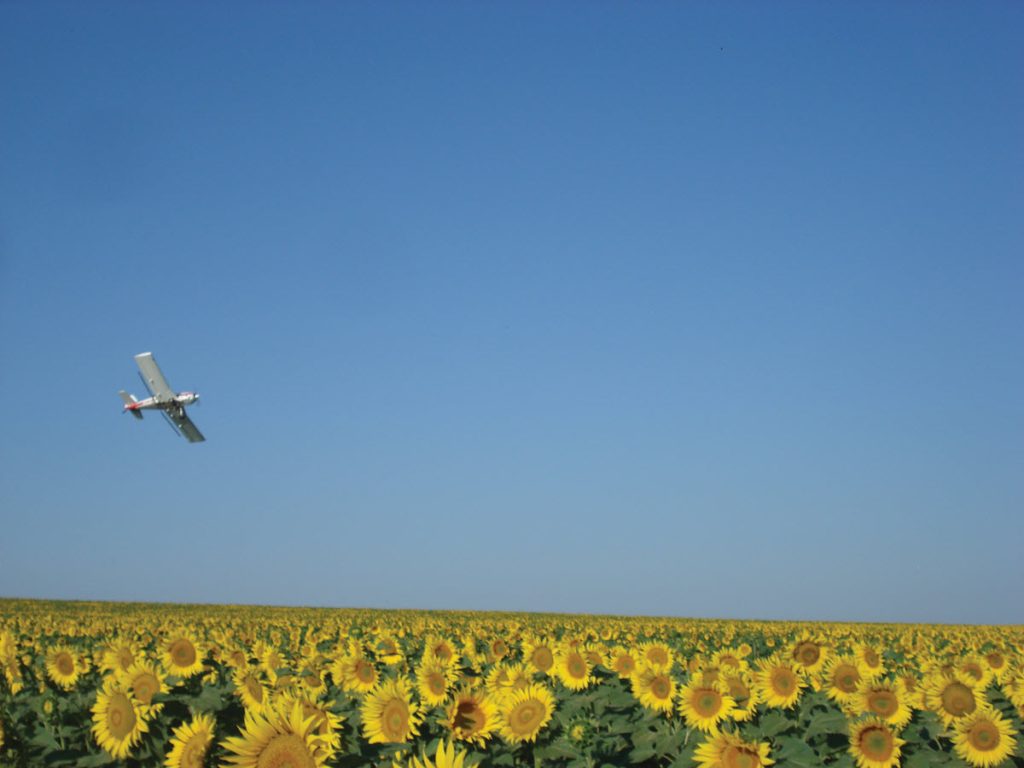
Photos courtesy Laura Alleman
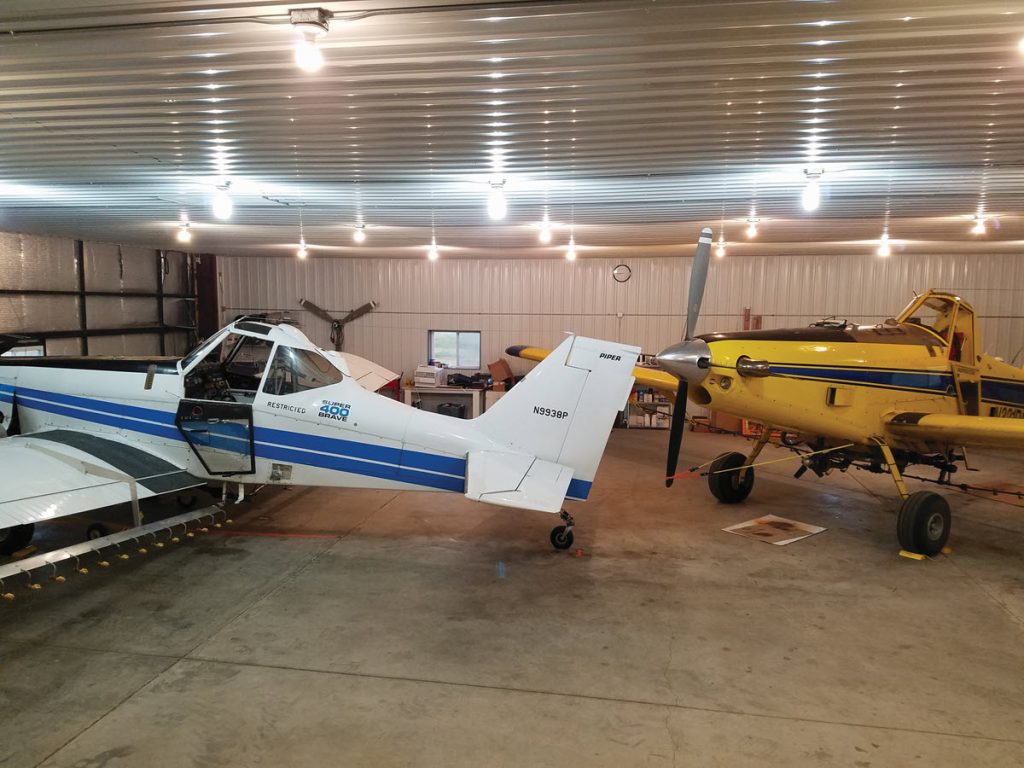
A Spray Pilot’s Thoughts on the Pawnee Brave
By Randy Yost
Randy Yost has been a spray pilot for more than 30 years. Throughout his career, he has always favored the Pawnee Brave. “I started crop spraying in 1992, and I was hooked on the Brave from the beginning. A friend of mine had a Pawnee Brave, and I really liked its performance. So within two years after I started spraying, I bought my 400 Brave in Spokane, Washington, and flew it back over the mountains to South Dakota. Along the way, I’ve also owned a Terra Brave and 300 Brave.”
Randy appreciates the Brave’s superb flight characteristics. “It’s a very docile airplane to fly,” he said. “It doesn’t have any bad aerodynamic qualities. It’s an easy plane to take off and land, and when trimmed right, it basically flies itself. It makes spraying fun!
“It’s also a simple, low-cost plane to maintain. The only drawback is that it has an airworthiness directive that requires that after so many hours, the wing spars and center carry through have to be replaced. Fortunately, my brother and I are both A&P mechanics (my brother is an A&P/IA), so we were able to do this on our own.
“For the first 15 years of my spray business, I sprayed on my own. It was a good moneymaker and a family operation, with my wife, daughters, and son all doing their part to keep the airplane in the air. Over time, farmers required more acres to be sprayed and began putting on more chemicals and fungicides, requiring more trips to the same fields. Eventually, I couldn’t cover the acres by myself anymore, so my brother started helping me spray. Then it wasn’t long before my two nephews were also helping. They also flew 300 and 400 Braves. That increased the amount of maintenance, but we kept parts on hand. Since the parts were interchangeable, the planes were never down for long.”
Randy’s business kept growing to meet increasing demand for spraying. Farmers kept expanding their fields and using bigger equipment, so they needed spraying services to cover all those acres. “With the growth rate we were experiencing, I knew eventually I would need to go to turbines to keep up with demand, so I purchased a turbine Brave. That Brave was a great plane to make a transition to a turbine because I only needed to get used to the engine and not the airframe.
“We eventually transitioned to Air Tractors, but I kept my 400 Brave,” Randy said. “It still runs great, and is still, by far, the best plane I’ve ever flown. I wish Piper had continued to produce Braves and designed it to carry larger loads. But regardless, I like the Brave so much that even after 30 years of spraying, if I had my choice, I’d still be flying the 400 Brave as my primary spray plane.”
Landing in Ecuador
I finally gave up any hope of following the coast to my planned overwater departure at Puntarenas, Costa Rica, and took a direct heading across the Gulf of Panama toward Ecuador. It was a pure point-and-shoot, but I figured, what the heck, it worked for Lindbergh. I guesstimated the distance at just more than 700 nm to Esmeraldas, and I knew there was only water between me and Ecuador.
The waves below suggested winds were light, though on the nose. As I drifted across the equatorial waters toward Ecuador, I couldn’t help wondering how I’d go about ditching a 4,000-pound rock with everything hanging out to grab the waves.
Sure enough, just more than seven hours after abandoning the Costa Rican beach, I crossed the rainy coast of Ecuador 14 minutes late and a few miles south of Esmeraldas. The rain kept me low for the remainder of the flight, but I was able to sneak into Guayaquil between thunderstorms just after dark.
I spent the next day removing radios and instruments and finally jumped the airline home to Los Angeles nine days after leaving it. A trip planned for four days had required more than twice that time. Still, it was another 30 hours logged, several new lessons learned and an opportunity to fly a new type of airplane. What better way to learn a new model than a 3,000 nm, seven-country, international ferry flight?
Select a photo to open a pop-up slide show
